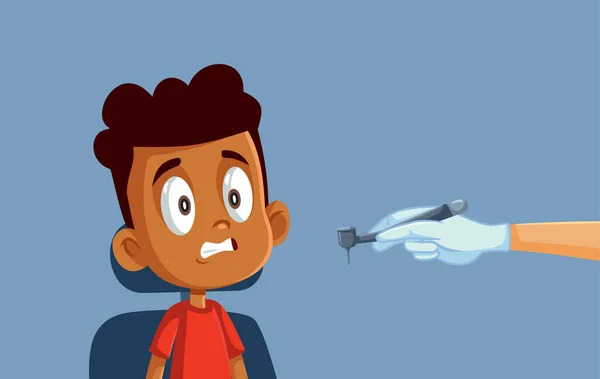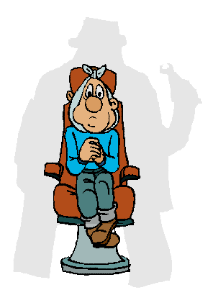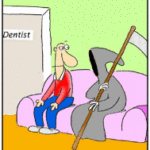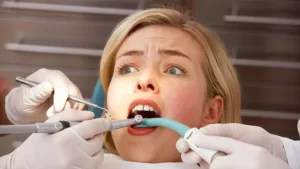How to Overcome of the Dental Fear
Dentist phobia is quite widespread, with research showing that 13 percent to 24 percent of people worldwide suffer from it. Dental anxiety is distressing but not crippling for many people.
However, some people are so terrified of going to the dentist that they delay going until they have an aching tooth or an illness that needs a visit.
The terms dental anxiety, fear, and phobia are frequently mixed up by people.The following is a great approach to distinguish between anxiety, fear, and phobia:
-Dental Anxiety is a reaction to a potential risk. Most people have some dental anxiety especially if they’re having a procedure done for the first time.Often, it’s the “uncertainty factor” – a fear of the unknown.

-Dental Fear is far more specific. If somebody has a fear, they can usually tell you what exactly it is they’re scared of . Common examples include needles, pain, gagging or being humiliated. If you have a lot of different dental fears, pinpointing them can become a little overwhelming. But you should be able to identify them with some prompting.
-Dental Phobia is the terror you feel and so strong that you avoid the dentist until either the physical pain or the emotional burden of the phobia becomes overwhelming. Some people, for various reasons, may still attend a dentist. But they will endure these encounters with intense fear or anxiety.

How to Overcome of the Dental Fear ?
Fear is a learned behavior which, therefore, can be unlearned. Patient-centered behavior modification that treats you as a whole person, not as a set of teeth can help you overcome your fears. This will obviously take a team approach between you and your dentist and his/her staff.
Communication is the key. You must feel comfortable expressing your fears and concerns and have a sense that you are being listened to. If you feel that the Dr. and/or staff if not genuinely concerned and listening, then absolutely feel comfortable with seeking out referrals to other offices.
You should never compromise the level of communication that you feel is necessary to give you a sense of control over your situation in the dental office. Modern dentistry with a compassionate dental team can be truly painless. You can desensitize yourself to your fears if you take the first step and allow the right team to help you overcome your fears.

A Sense of Control
Explanation and clarification of any and all procedures proposed is your right as a patient. If you have a question about a particular procedure, ask it! Empower yourself with the knowledge to alleviate fear of the unknown. You should have input into treatment decisions and choices. You should be honest with your dentist regarding how much treatment you think you can tolerate at first. As you build confidence in yourself and trust in the team that is caring for you, the length of your appointment and the amount of work accomplished will increase.
A Signalling System should be established allowing you to stop for any reason, whether it be because you need more anesthesia, want to rinse out, or simply need a two second break. The most common signal is raising your hand
Never be Embarrassed
If you have been ridiculed in the past for your behavior or if you are embarrassed by your present dental condition caused by your neglect, please express yourself honestly and give your present dentist a chance to understand your concerns and show you that they care. You will be amazed at the wealth of treatment options that you might not have thought were possible. With modern dentistry, it’s never too late to recreate a new smile!
Relaxation Techniques
If you feel tense in the chair, the easiest way to relax is through forms of physical relaxation. A relaxed body promotes a clear and relaxed mind. The human body cannot be physically relaxed and mentally anxious at the same time! The brain won’t process these feelings simultaneously. Physical relaxation methods are easier to accomplish at first as compared to cognitive ones, so practice forms of physical relaxation first.
Examples of physical relaxation are Diaphragmatic Breathing, Progressive Muscle Relaxation, and various methods taught in yoga . There are numerous books and sources for these methods. If you induce relaxation in the presence of the stimuli that normally induces your fears (the dental environment), the fear response will be greatly diminished over multiple exposures and you will gradually desensitize yourself to these fears as you build confidence. The memories of traumatic visits will be replaced with more innocuous ones and this less threatening environment coupled with your relaxation methods will help you eliminate your fears.

Distraction
As you get more comfortable in the dental environment, you can engage in various distraction techniques that many offices have. The use of a music player is a common technique. Many offices now are equipped with Virtual Reality-like glasses that provide both visual and auditory distraction by allowing you to view videotapes through these glasses while having dental work done. We only suggest using distraction techniques once you have established some trust and confidence because your ability to communicate will be compromised, although it is easy to stop any of these devices if need be.
Predictable Pain Control
Modern dentistry has many new techniques with regards to the administration of local anesthetics to block any possibility of pain. There are many people who have anatomical or biologic variations that do require more individualized techniques in order to predictably achieve proper local anesthesia. This variation must be respected and communicated to your dentist. All injections should be given slowly . The needle itself is not the major cause of discomfort, but in fact, it is the pressure and volume of the fluids being injected that causes the discomfort. There are also great differences in the types of tissue in various locations anatomically and from person to person that must be considered when administering injections. There are even computer-controlled machines that are now available to standardize the injection process and make it more predictable than the conventional hand-held syringe.